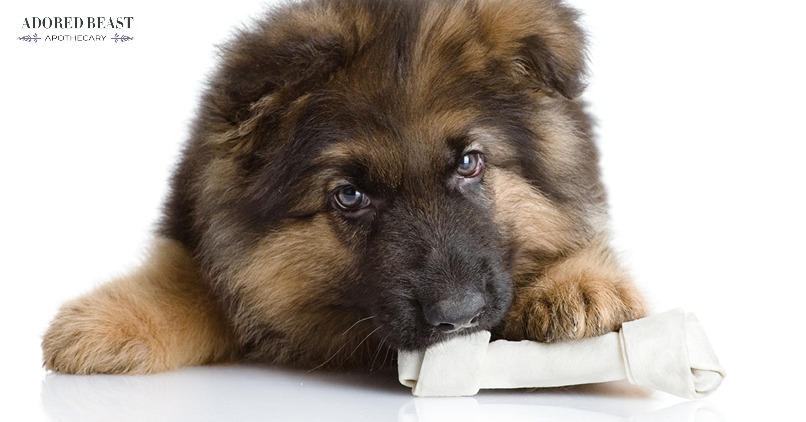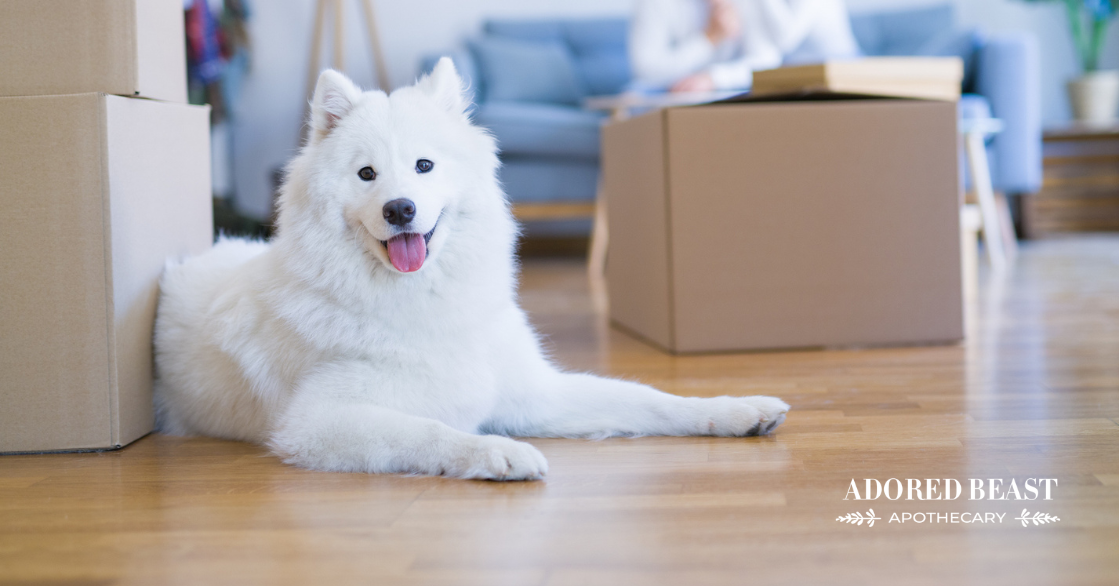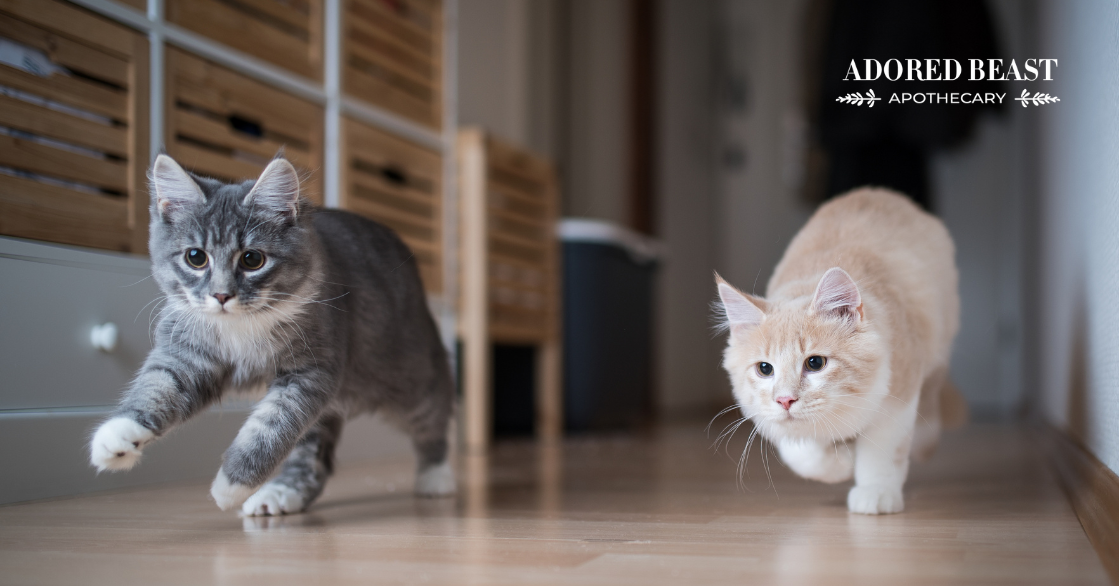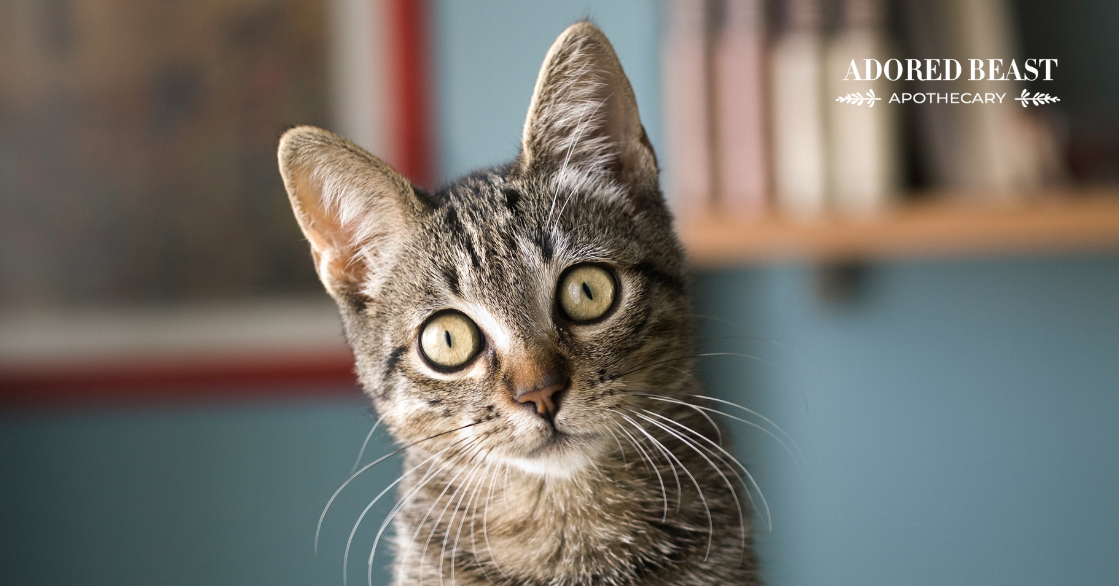For many years, rawhides for dogs have been a popular treat. You see them in their many variations spread across pet and grocery store shelves. At the holidays you can find them done up in celebratory colours like red and green, or in different shapes and sizes for various sized dogs.
But in our opinion (and we know we’re not alone in this thinking), in each and every case, rawhides are a no-go. Despite the name, there’s nothing ‘raw’ about them, and how one could begin to classify them as bones is beyond all imagination. We would never give our dogs rawhide bones and we would never recommend them to other pet parents.
But why? How have these terrible treats garnered such popularity? And why do we say NO WAY to rawhides for dogs?
Why are Rawhides so Popular?
Dogs need to chew. It’s instinctual. We’re sure many of you have noticed that your dogs spend hours a day chewing away. Chewing can provide your dog with valuable mental stimulation and can even help relieve anxiety and stress by stimulating hormones and exercising the mandibular joint!
Chewing is also great for oral health. It keeps your dog’s jaws strong and healthy and is vital for dental health. In fact, dogs who chew regularly on bones tend to have less plaque and tartar build-up on their teeth.
Rawhides are so popular because they seemingly fill this need.
They’re also inexpensive. Since rawhides are cheap to produce, they’re often among some of the cheapest treats on the market.
But these things don’t make rawhides a good choice. And we want to run through the many reasons why that is…
1. How Rawhides for Dogs are Made
There isn’t just one simple reason we’re not big fans, so we’ll start with our #1 reason: the process to make them.
Rawhide chews come from the leather industry’s leftovers. Don’t mistake that for the beef industry – it’s not the same. These leftovers are the layers of an animal’s hide that won’t be used to make leather goods.
The layers used to make rawhide bones are usually are taken directly from the kill floors at slaughterhouses and placed into high-salt brines, which is meant to help slow down (but not stop) their decay.
From there, the hides are soaked and treated to strip the hair and fat that is still attached. The chemicals used to do this? Ash-lye or sodium sulphide lime – and no, you guessed correctly, neither of those are good for your dog.
Once the hides have been stripped of any remaining hair or fat, more chemicals are added to the mix to “puff” up the material. This makes the remaining layers easier to separate.
Now it’s time to bleach. Once separated, the inner layer (the one used to make rawhides) needs a little sprucing up. That means another bath in bleach, hydrogen peroxide, or another similar chemical, to whiten the material. That’s right – the rawhide on the shelf doesn’t naturally come that colour.
From there, the material gets a makeover. This could involve adding pretty colours or even flavours to make the chew more appealing to pups. But again, don’t let this fool you! The chemicals used to ‘prettify’ rawhides can include titanium oxide, sodium benzoate, and known carcinogens FD&C Red 40.
At no point during the process of manufacturing is the health of the animal chewing it taken into consideration. At each stage, these harmful chemicals soak into the hide, and when your dog chews the rawhide, they’re all being ingested.
But again, this isn’t the only reason they’re dangerous…
2. Risk of Blockages
When a dog chews on a rawhide, what they’re really doing is softening it up enough to swallow it. And some dogs will chew off and swallow little pieces, whereas others with chomp away and swallow the biggest pieces they can.
The problem is, these pieces do not dissolve in the stomach. In fact, they swell up! Remember, they’re leather. If you ate shoe leather, it’s not going to dissolve, and neither will a rawhide. It has to pass through the entire digestive tract. That’s why those who feed rawhides find pieces of them in their dogs’ poop. What comes out is exactly what goes in.
But what happens if one of those pieces gets stuck somewhere along the way? And yes, there are many, many cases of this happening.
Intestinal blockages caused by rawhides are a real concern. And they’re also a real danger. A life-threatening danger in fact. Even if caught early, an intestinal blockages almost always requires expensive and invasive surgery.
3. Choking
Dogs are different in their chewing styles, and while rawhides are supposed to be “safe for puppies and adult dogs” alike, that’s just not the case!
As mentioned above, some dogs will chew off small pieces while others will chew off and swallow massive chunks.
And, again, these pieces are usually swallowed and pass through the digestive tract. But unfortunately, sometimes they don’t even make it that far.
The risk of choking is another reason we don’t like rawhides. These chews can become incredibly slimy and accidentally slip in your dog’s mouth before its fully chewed – that makes them a massive choking hazard. Or, if a dog tries to swallow a piece that’s too big, and it gets stuck, it can block the windpipe, cutting off access to air and the ability to breathe. In this case, rapid emergency care would be required, but as heart-wrenching a fact as this might be, it’s often not rapid enough.
Safe Alternatives to Rawhides for Dogs
So, if rawhides for dogs are off the list, what other options are there?
When it comes to chewing, for pets with no underlying health conditions, nothing beats an actual raw bone.
Raw bones are a rich source of minerals like calcium, phosphorus, and magnesium. In fact, the calcium in raw bones, which is necessary for healthy bones, is much higher than any levels you’d find in a calcium supplement!
And they’re going to provide that mental stimulation and oral health care we spoke about earlier – all the reasons to give your dog something to chew on.
NOTE: Please make sure there are NOT smokes bones!! Smokes bones are as chemically-laced and dangerous to chew as rawhides!
NOTE: For dogs with severe GI issues, missing teeth, chronic pancreatitis, or those who tend to gulp or inhale their food, avoid raw bones.
Safety Tips for Feeding Raw Bones
- Raw is crucial here. You never want to give your dog cooked bones. Cooking changes the chemical structure of the bone, making it brittle, sharp, and hard to digest.
- There are two types of bones – consumable and non-consumable. The first are those your dog can eat, either as part of a meal or as a meal replacement. Non-consumable bones, on the other hand, are ones that are good for chewing, and can be partially eaten, but shouldn’t fully be consumed.
- Consumable bones: chicken/duck/turkey heads, necks, beef/buffalo knuckles
- Non-consumable bones: beef/buffalo/lamb/boar femurs.
- Always watch you pet when they’re eating raw bones. Teach your pet how to chew by holding the bone for them and watching them closely as they learn.
Other alternatives for safe chewing include natural bully sticks – just be sure they have been stored properly. Antlers can be another good alternative. Check with your trusted local retailer for ethically sourced, safe options.
What about pig ears or jerky treats? Be wary. Both of these tend to be poorly sourced and made using unsafe manufacturing processes. Many come from companies that do not put enough in place as far as quality control, or product dog treats that are very low quality. Often they’re as bad as rawhides for chemical ingredients/contaminants. That being said, we do know that some companies do their due diligence and produce high quality, safe pig ears and jerky treats. Do your research, ask questions. Be really selective. If you’ve vetted the makers, or trust that your local store has, and they’re chemical free, that’s great! Both can be great chews!
When it comes down to it, chewing is an important activity for dogs to engage in, but there are good chews and bad chews our there. Rawhides for dogs are at the top of the “bad” list, and thus should be avoided at all costs.











![[RESEARCH] Is Herbicide Safe for Dogs?](https://blog.adoredbeast.com/wp-content/uploads/2025/06/herbicides-safe-for-dogs-103x55.png)
